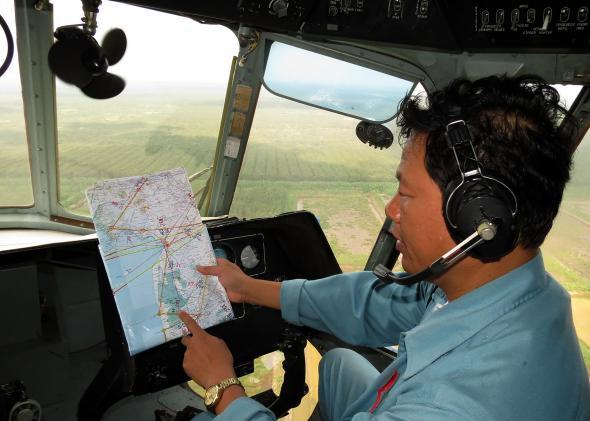Whenever a plane goes down, experienced air craft investigators look at the general circumstances and mentally draw up a list of the most likely causes—not to leap to conclusions, but to prioritize lines of enquiry and organize competing hypotheses. As information comes in, it should be possible to eliminate those hypotheses one by one until at last a full understanding of the circumstances remains. The goal is to make sure that the problem will never again bring down an airliner. This philosophy works: Year by year, fewer commercial airliners are lost to accidents.
The downside is that, as likely sources of aircraft accidents are eliminated, what’s left behind are increasingly arcane and bizarre, once-in-a-million combinations of bad luck, incompetence, and malice. And the longer we go without any significant clues regarding Malaysia Airlines Flight 370, the more likely that its true cause will fall into that category.
For instance? Some airline pilots have begun to speculate that one of the flight crew might have intentionally caused the plane to disappear and flown off with it to an undisclosed location. This line of speculation, outlandish as it may sound, was only bolstered when it was reported Wednesday that investigators were actively pursuing the possibility that the plane had been diverted “with the intention of using it later for another purpose.”
There’s no telling why someone would want to make off with a plane with 239 souls aboard. But if you did want to try, it’s at least physically possible to succeed. Here’s how you’d go about it.
- Kill or incapacitate your fellow pilot. “We have a deadbolt on the inside of the cockpit door,” says Rich Solan, who flies 777-200s for American Airlines.
- Wait until you’re over a region with poor radar coverage, then turn off your transponder, ADS-B, and ACARS. As I wrote on Slate previously, there’s a small stretch of MH370’s regular route, midway between Malaysia and Vietnam, that fits the bill. And this happens to be where the flight vanished.
- Turn and dive for the deck. Radar coverage gets worse the lower you go, so if you want to stay off primary radar, you’ll fly as low as possible. There’s a drawback to this strategy, however: The lower you fly, the slower you go, and the more fuel you burn. A 777 can go 485 knots burning 13,000 pounds of fuel per hour at 35,000 feet; down at sea level, you’re talking more like 20,000 pounds per hour and only going 310 knots. So if you can go 2,000 miles at altitude you’ll probably only go around 800 miles down low.
- Find someplace to land. The 777 is a big plane—once Boeing retires the 747, it will be the biggest in its stable—but in an emergency it can be put down on a relatively short runway. “If I have a fire in flight, I’m prepared to put it down on anything above 5,000 feet,” says Solan. “You could put it on a highway.” A runway wouldn’t even necessarily have to be paved; hard-packed dirt would likely be good enough. Throw some camouflage netting over the plane once you’re on the ground, and you’re good.
- Sell it. There’s an active market for used 777s. “They’re worth big money,” says David Rose, who owns the plane-trading website Barnstormers.com. A 1994 model is currently for sale for $37.5 million; another from 2001 has a price tag of $54 million. Or you could play chop shop and break it up for parts. “There’s a big market for second-hand airliner parts,” says Rose. The only problem: All those parts have serial numbers on them, and pretty soon those are going to be the most famous serial numbers in the world. Then again, a cash-strapped operator in a developing country might not care.
A major hiccup to a plan like this one: The part of the 777’s Aircraft Communications Addressing and Reporting System that transmits information about the status of the plane’s engines can’t be turned off by the pilot. Interestingly, the Wall Street Journal reported Wednesday that just this kind of information had been picked up for four hours after all other contact with MH370 had been lost. For what it’s worth, Malaysian authorities have declared that that report was erroneous—but on Thursday, the Washington Post quoted White House spokesman Jay Carney as saying “one possible piece of information or . . . pieces of information has led to the possibility that a new . . . search area may be opened in the Indian Ocean, but I don’t have any more details on that.”
Read the rest of Slate’s coverage of Malaysia Airlines Flight 370.
